DIOPSIDE (CHROMDIOPSIDE)
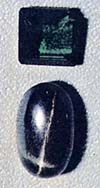 Characteristics of the mineral.
Characteristics of the mineral.
Another deceiver in the realm of minerals is diopside, and in particular chrome diopside. Diopside is a mineral from the group of pyroxenes, crystallizing in the monoclinic syngony. The color of the diopside is gray, sometimes the mineral is colorless, with an increase in the content of ferrous iron it becomes green. A beautiful bottle-green color, transparent diopside is a jewelery raw material. Divalent iron also stains the diopside in blue, and if trivalent iron predominates predominates - into yellow and brown-yellow. There are several varieties of diopside: violet - purple and blue (the color is given by manganese); Shefferite - rich in manganese; Zinc chefferite - rich in zinc and manganese; Jeffersonite - ferrosalite containing zinc and manganese; Chrome diopside - a beautiful jewelry stone, which for emerald green is called the Siberian emerald, which is a chromium-containing variety of diopside; Laurevite - green, containing up to 4% vanadium oxide; Smaragdit - a beautiful emerald-green stone, replaced in large part by hornblende. Diopside with the effect of the cat's eye and black diopside are also known.
Diopside is often found in the form of prismatic crystals of various sizes. Very large, well-formed crystals from the Baikal region (Slyudyanka) are called Baikalite. The mass of large jewelry stones usually does not exceed 20 carats. The diopside units can be fibrous, then when they are processed, a velvety or pearlized ebb appears. Diopside has a glassy sheen. Hardness is relatively low - 5.5-6.6.
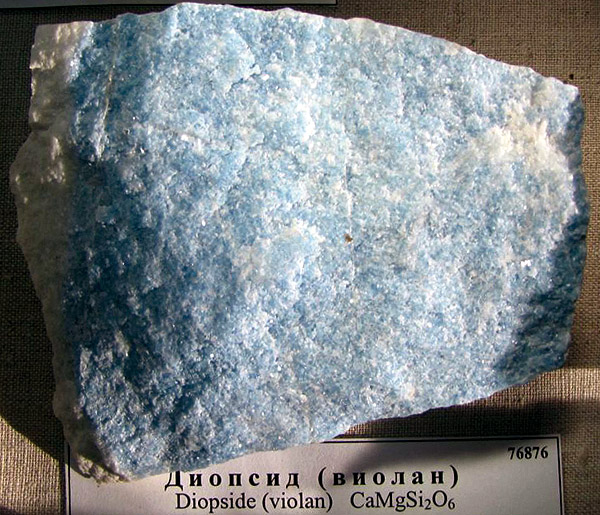
Diopside (Violan). Dovyren, the Yoko-Dovyrensky Massif, Sev. Pribaikalye, Russia, the CIS. Photo: © А.А. Evseev.
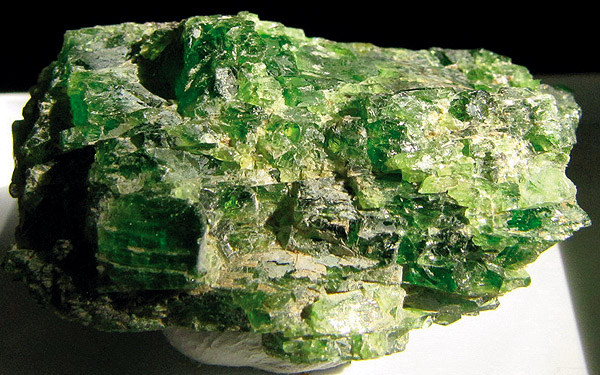
Chromium-diopside. Malacacheta, Minas Gerais, Brazil. 3,5х2 cm. Photo: © А.А. Evseev.
Unique is Inaglinskoye deposit of chrome diopside in Russia (Aldan). The output of jewelry chrome diopside in different parts of the field is not the same. The most promising is the central part, which contains a dark green chrome diopside. The jewelery quality of the chrome diopside of this deposit contains 0.2-3.5% chromium oxide. High quality chrome diopside can be given for much more expensive emeralds (chrome diopside, unlike emerald, is softer).
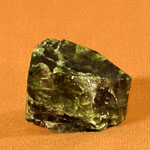
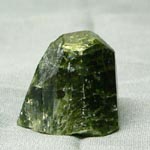
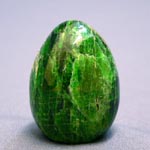
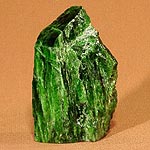
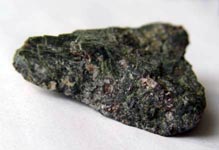
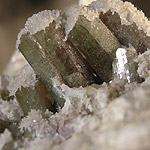
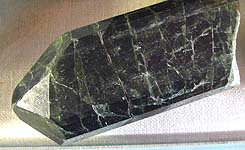
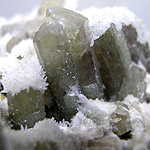

Poisonous and radioactive dangerous stones and minerals
** - poisonous stones and minerals (mandatory check in the chemical laboratory + explicit indication of toxicity).
** - radioactive stones and minerals (mandatory check on the standard dosimeter + ban on open sales in the case of radioactivity over 24 milli / g / h + additional measures of population protection).
All rare stones are subject to mandatory inspection at the standard dosimeter for the permissible level of radiation and in the chemical laboratory for the absence of poisonous and evaporating components that are dangerous to humans and the environment.


Comments
When commenting on, remember that the content and tone of your message can hurt the feelings of real people, show respect and tolerance to your interlocutors even if you do not share their opinion, your behavior in the conditions of freedom of expression and anonymity provided by the Internet, changes Not only virtual, but also the real world. All comments are hidden from the index, spam is controlled.